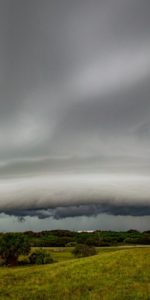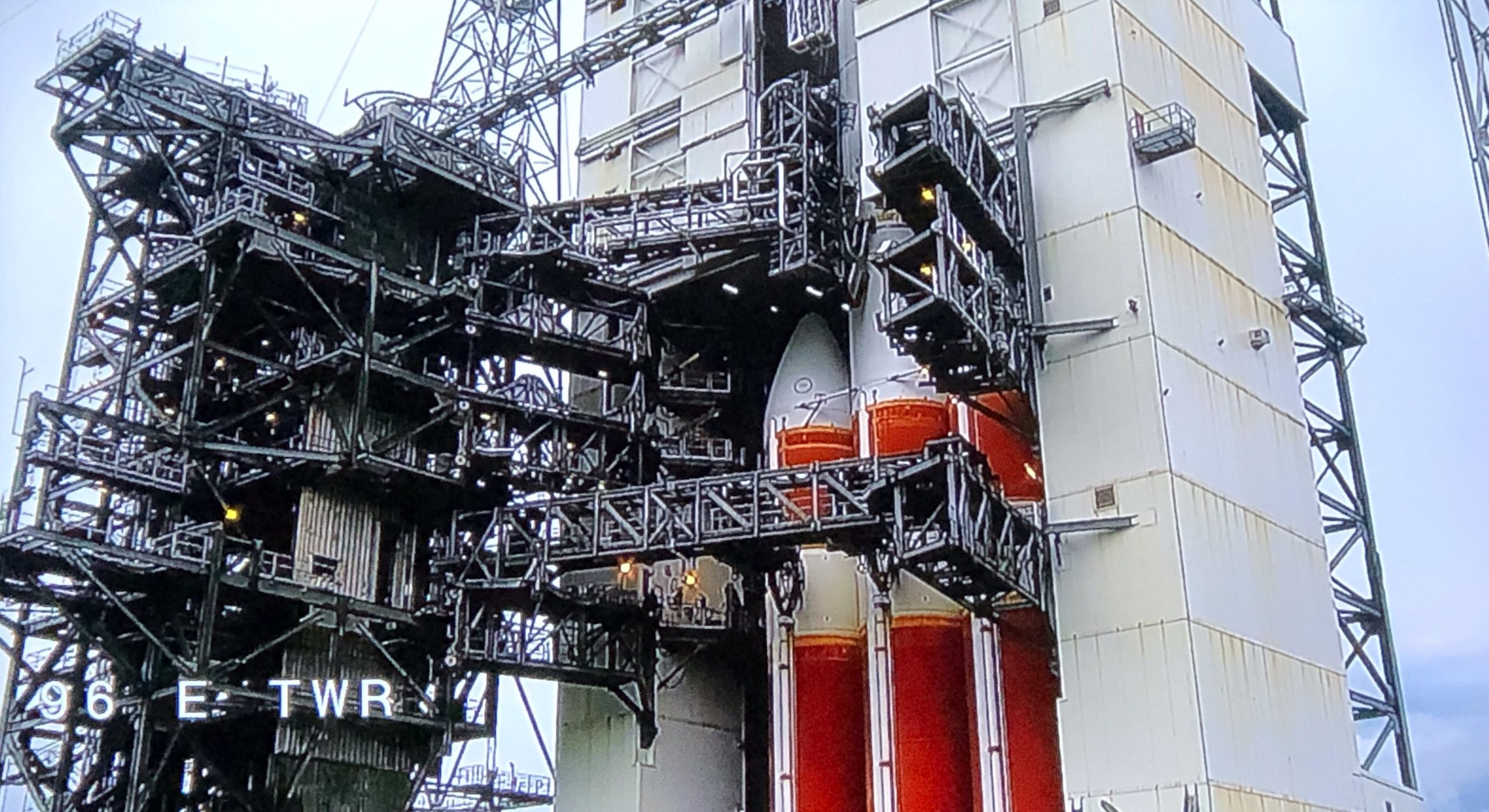
It seems that each day is shaping up to be another “Groundhog Day” for United Launch Alliance (ULA) and its snakebitten Delta IV Heavy on Space Launch Complex (SLC)-37B at Cape Canaveral Air Force Station, Fla., as yet another launch attempt on Tuesday night was ignominiously scrubbed. The triple-barreled rocket and its highly secretive NROL-44 payload—flying on behalf of the National Reconnaissance Office—was thwarted shortly after the 300-foot-tall (100-meter) Mobile Service Tower (MST) began its rollback.
In addition to a Phase 2 Lightning Warning and gradual downturn in the weather, a hydraulic issue was found in the MST. As a result, ULA is now targeting the long-delayed mission for 11:54 p.m. EDT Wednesday, although hopes remain high that up to four flights may yet launch from the United States’ eastern seaboard before the weekend.
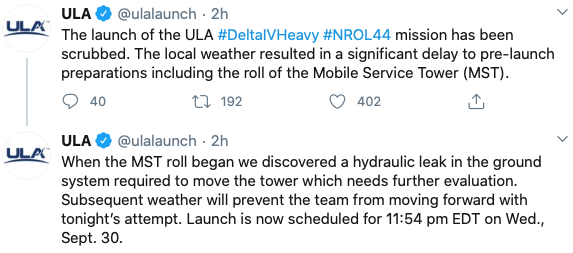
Countdown operations began at T-8 hours, shortly after 3 p.m. EDT Tuesday. It was expected that the countdown would include a pair of pre-planned built-in holds: one just prior to the onset of fueling at T-4 hours and 15 minutes, the other a little before the Terminal Count at T-4 minutes, with a projected liftoff time at two minutes before midnight.
But as circumstances transpired, neither of those hold-points were ever reached in Tuesday’s hapless launch attempt. Avionics aboard the 235-foot-tall (72-meter) rocket were powered up and the guidance and flight control systems were run through their requisite tests, amid a pessimistic weather forecast and a 40-percent probability of acceptable conditions at T-0. In her evaluation, U.S. Space Force meteorologist Jessica Williams highlighted a cold front over North Florida and pre-frontal storms over Central Florida, with a risk of approaching storms to bring high winds and a Lightning Warning.
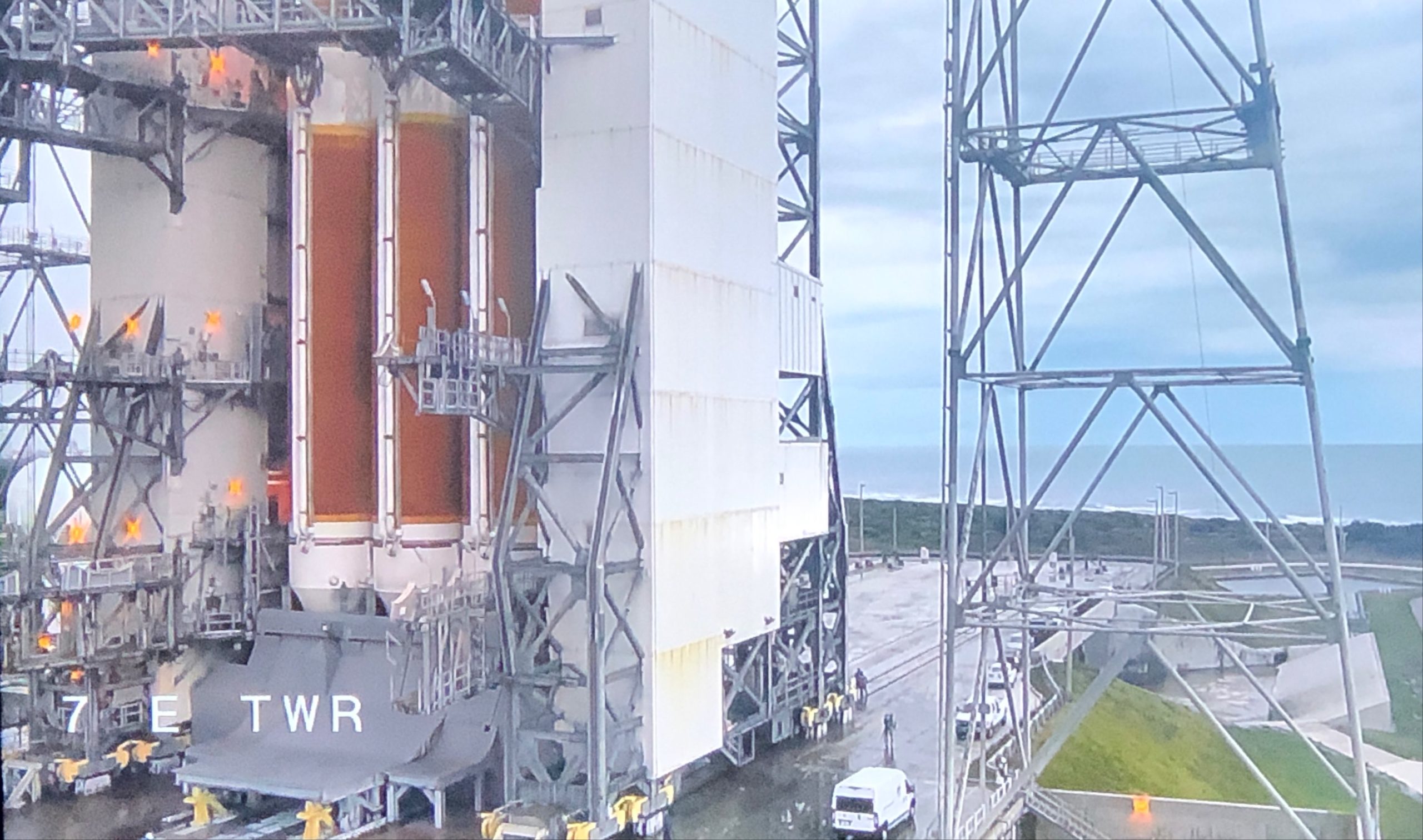
By 4 p.m. EDT, preparations to roll the MST away from the Delta IV Heavy were complete, but less than an hour later a Phase 2 Lightning Warning was issued due to approaching thunderstorms. “A Phase 2 Lightning Warning is issued when lightning is imminent or occurring within the specified area,” explained the 45th Weather Squadron at Patrick Air Force Base. “At that point, you are in danger and should immediately take protective actions.” As such, the pad crew cleared SLC-37B until such time as this critical weather alert was lifted.
Personnel were eventually cleared to return to their stations around 5:45 p.m. EDT, as a threatening band of clouds passed over the launch site and an apparent “window” of acceptable weather opened for MST Rollback. The tower’s motors were duly powered up and its claw-like tie-down clamps were disengaged. A few minutes past six, ULA Launch Director Lou Mangieri gave permission to Launch Conductor Scott Barney to begin the jacking and rollback, which Mr. Barney promptly radioed to the pad lead engineer. Under the power of 40 hydraulic cylinders, the colossal MST was jacked up a few inches and “first motion” of the ten-million-pound (4.5 million kg) tower came at 6:24 p.m. EDT.
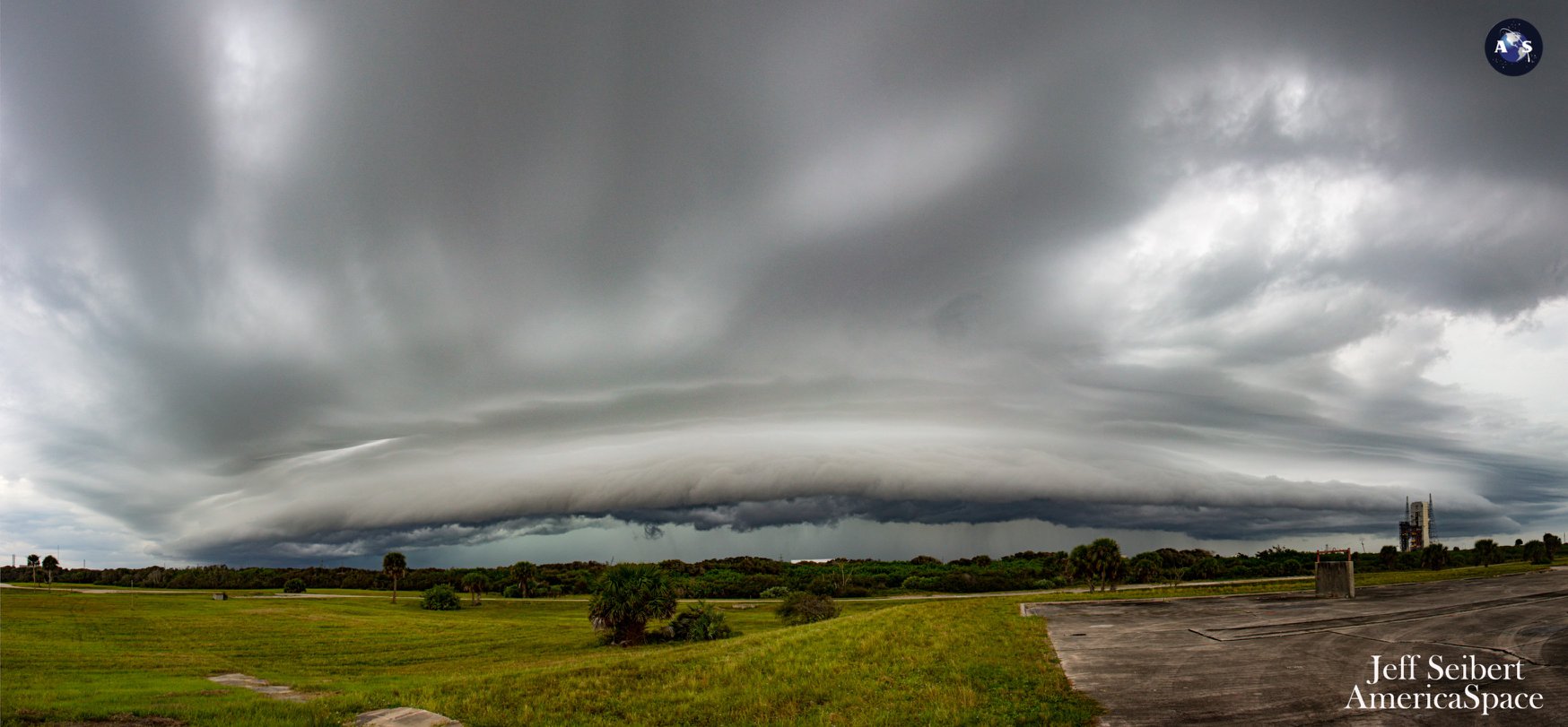
Sadly, as with so many days before it, Tuesday was simply not to be. ULA formally declared a scrub for the night at 7:25 p.m. EDT. And although it acquiesced that “the local weather resulted in a significant delay to pre-launch preparations”, it was added that a hydraulic leak in the ground system which moves the MST also complicated the proceedings. “Hydraulic hose failure in the MST,” tweeted ULA CEO Tory Bruno. “Happens now and again. Part on hand, repair underway. However, the earlier lightning ate up so much of the launch window that we will not be able to continue towards a launch tonight.”
The next attempt is targeted for 11:54 p.m. EDT Wednesday. According to the 45th Weather Squadron’s outlook for the week, conditions appear somewhat brighter, with a 20-percent probability of violation, primarily centered upon the Thick Cloud Rule.
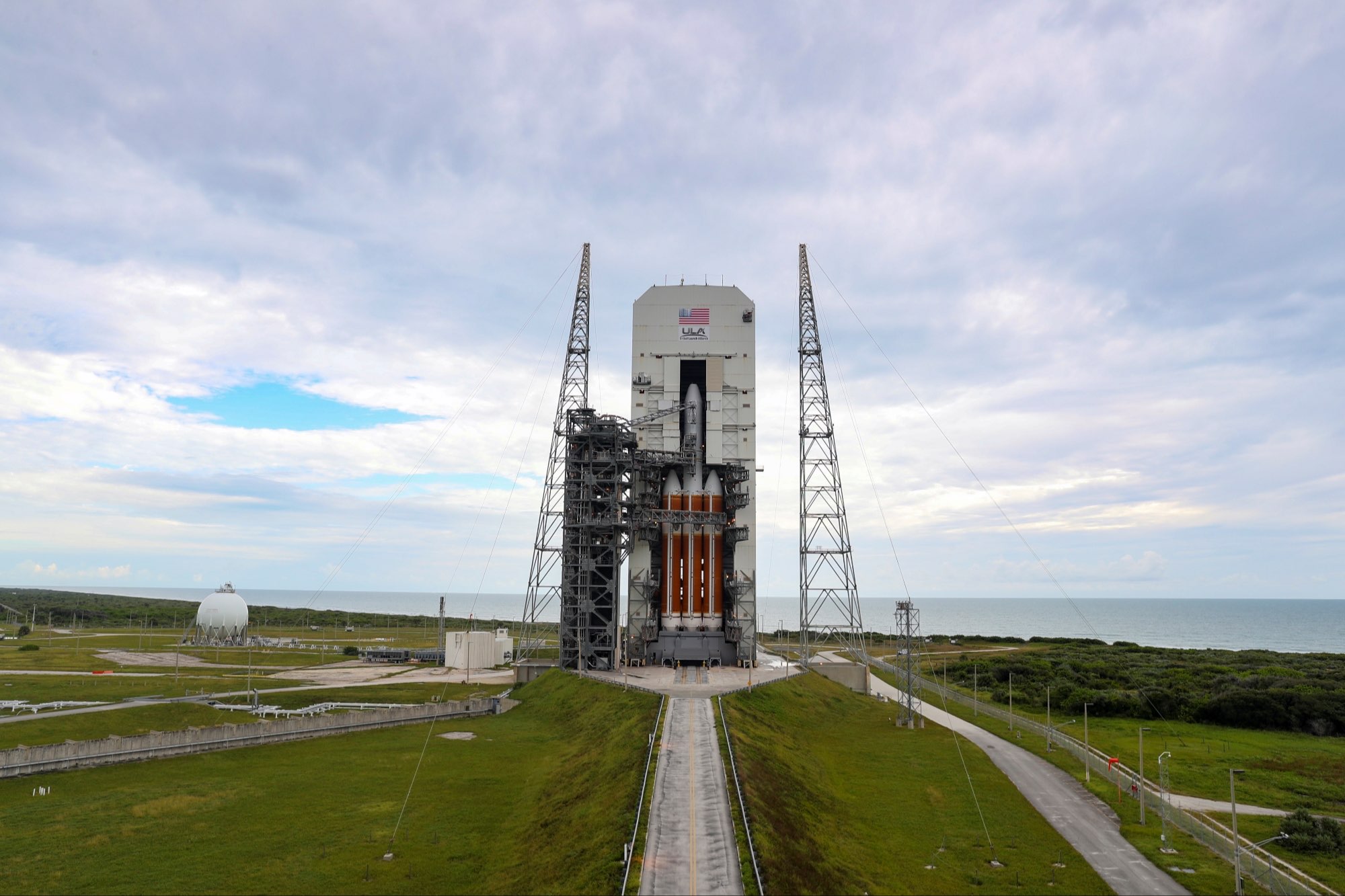
Last night’s delay is just the latest for the Delta IV Heavy, which has to date sat on its launch complex for more than ten months—320 days, to be exact—and has succumbed to multiple postponements and frustrating technical problems. This will be the first voyage by ULA’s “Majestic Delta” in more than a year, as the Centennial, Colo.-based organization winds down its product line of these boosters, with an expectation that just five Delta IV Heavies will fly through mid-decade.
After arrival on the pad last 15 November, it underwent a Wet Dress Rehearsal (WDR) in the second week of January, where it was fueled with a full load of 440,000 pounds (200,000 kg) of liquid oxygen and hydrogen and put through a full countdown simulation. This is a customary process for all NRO missions conducted by ULA.
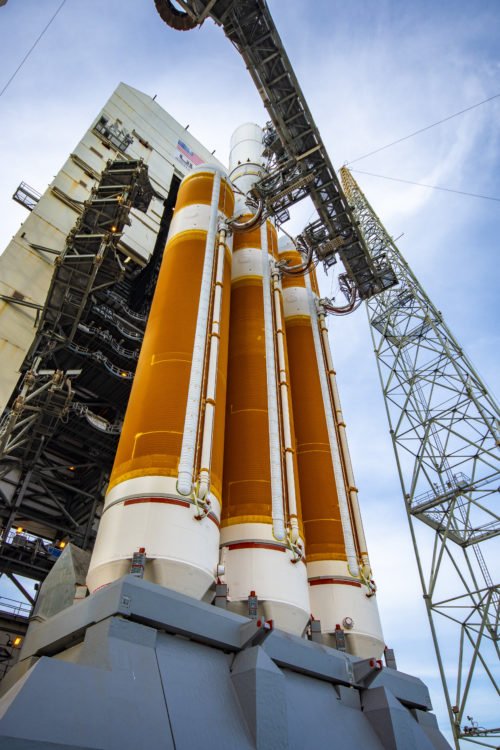
Hopes to launch in June were postponed at the NRO’s request until 26 August, with another 24-hour move to the 27th. Then a ground pneumatics control system issue conspired to create another two-day delay and a visually dramatic “Hot Fire Abort” on the 29th—autonomously commanded at T-3 seconds, after the Delta’s starboard-side Common Booster Core (CBC) had already ignited—produced a lengthier slip as three pad-side actuators were removed, refurbished, tested and reinstalled.
Efforts to get the beleaguered mission off the ground as early as 26 September also came to nothing, when a hydraulic problem arose with SLC-37B’s swing-arm system and forced another three-day delay. Two scrubbed attempts within (strictly speaking) the same day add yet another shade of frustration to an already frustrating launch campaign. Tuesday saw an attempt at 12:02 a.m. EDT scrubbed and an attempt at 11:58 p.m. EDT also called off.
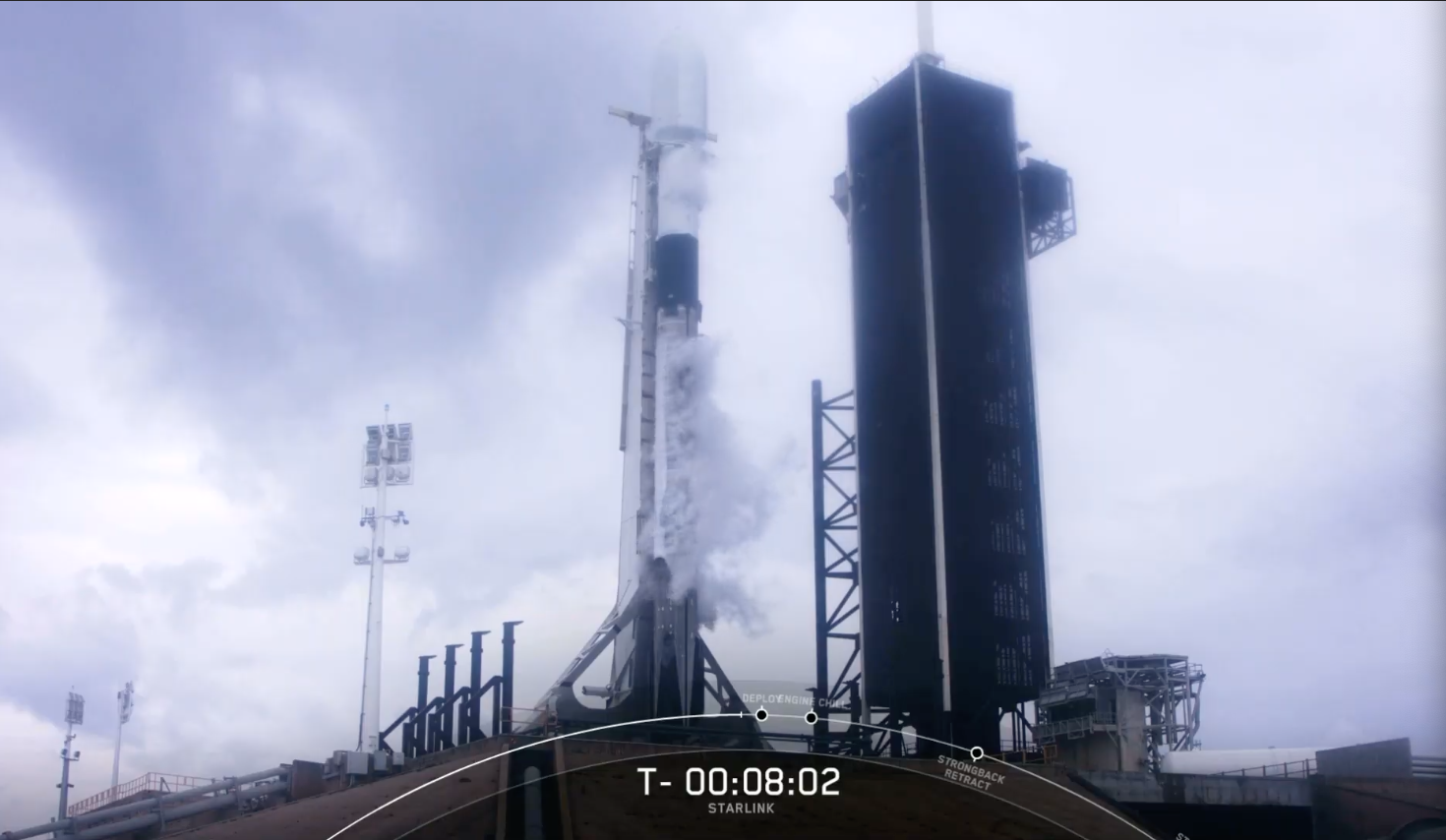
Assuming NROL-44 finally flies a few minutes before midnight Wednesday, the pace of launches from Cape shows no sign of abating. Next up from historic Pad 39A at the Kennedy Space Center (KSC) is a veteran SpaceX Falcon 9, laden with another 60-strong batch of Starlink internet communications satellites, bound for low-Earth orbit. Launch of that mission is targeted for 9:17 a.m. EDT Thursday, with a brand-new Falcon 9 also aiming to loft the Space Force’s fourth Block III Global Positioning System (GPS) navigation and timing satellite from neighboring SLC-40 at the Cape at 9:43 p.m. EDT Friday.
If both SpaceX missions launch on time, a new “personal-best” of just over 36 hours will be set between two Falcon 9 launches from the same coast. That will eclipse the three days, 13 hours and 28 minutes which passed between the SAOCOM-1B mission at the end of August and another Starlink flight early last month. Both missions are expected to terminate with first-stage landings on Autonomous Spaceport Drone Ships (ASDS), with the Starlink booster wrapping up its third launch by heading for “Of Course I Still Love You” and the new GPS booster aiming to touch down on “Just Read the Instructions”.
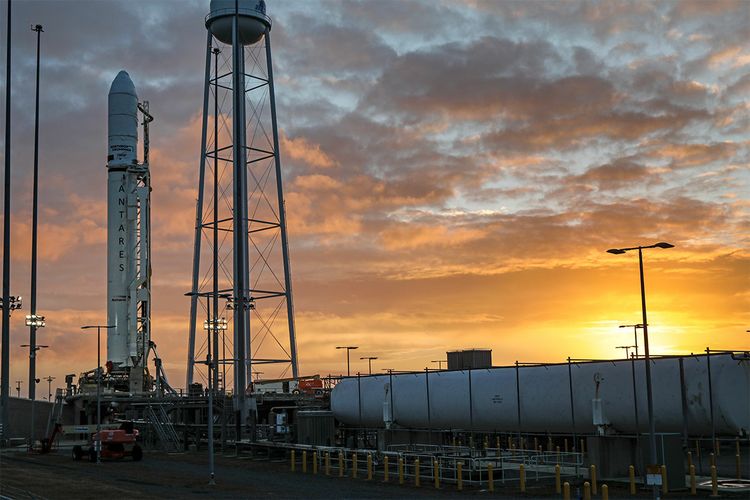
Not to be outdone, Northrop Grumman Corp. is in the final stages of readying its Antares 230+ booster to deliver the NG-14 Cygnus cargo ship to the International Space Station (ISS). That mission—whose Cygnus is named in honor of STS-107 astronaut Kalpana “K.C.” Chawla—is targeted to fly from Pad 0A at the Mid-Atlantic Regional Spaceport (MARS) on Wallops Island, Va., at 9:38 p.m. EDT Thursday.
Laden with 7,758 pounds (3,519 kg) of payloads, equipment and supplies for the incumbent Expedition 63 and forthcoming Expedition 64 crews, the Cygnus will be robotically grappled and berthed at the space station on Sunday morning.




